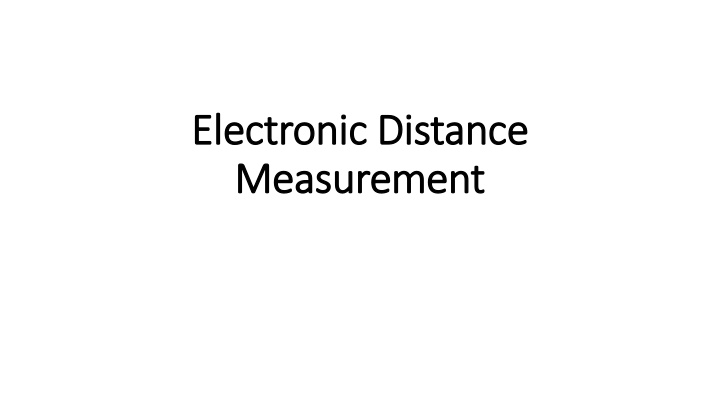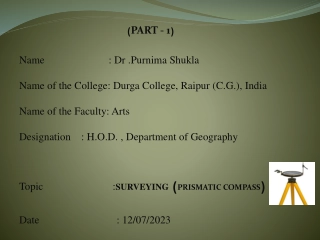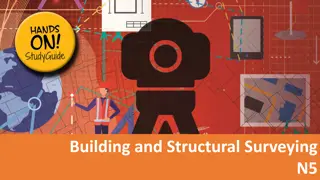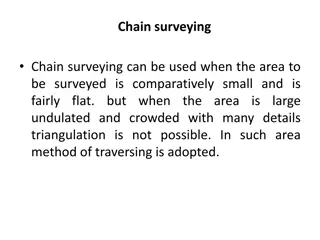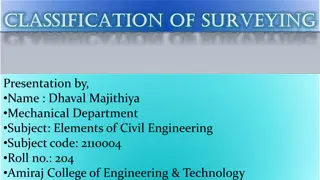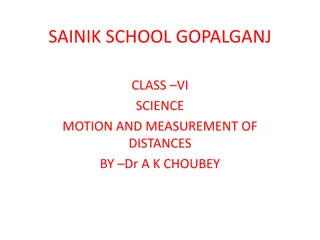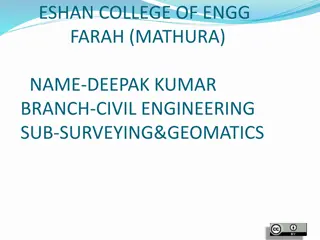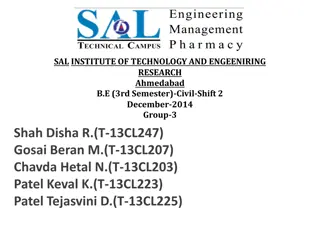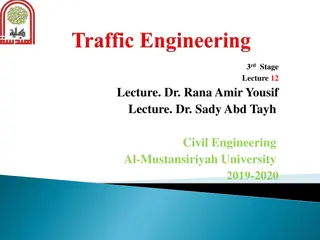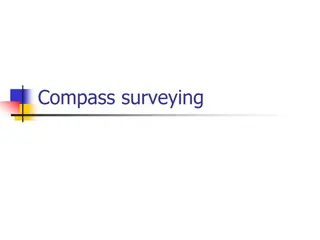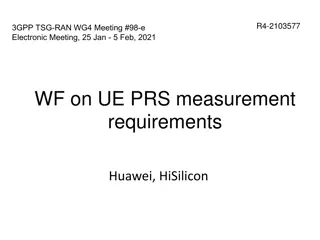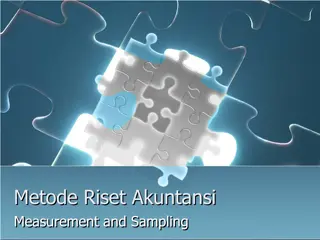Electronic Distance Measurement in Surveying
Electronic Distance Measurement (EDM) is a precise method for measuring distances between two points using electromagnetic waves. It offers speed and accuracy, especially useful for long or inaccessible distances. EDM, a type of surveying instrument, measures phase changes in energy waves traveling between points. It contrasts with Direct Distance Measurement and Optical Distance Measurement methods. Despite instrumental and natural errors, EDM instruments excel in overcoming obstacles and providing efficient measurements in surveying applications.
Download Presentation

Please find below an Image/Link to download the presentation.
The content on the website is provided AS IS for your information and personal use only. It may not be sold, licensed, or shared on other websites without obtaining consent from the author.If you encounter any issues during the download, it is possible that the publisher has removed the file from their server.
You are allowed to download the files provided on this website for personal or commercial use, subject to the condition that they are used lawfully. All files are the property of their respective owners.
The content on the website is provided AS IS for your information and personal use only. It may not be sold, licensed, or shared on other websites without obtaining consent from the author.
E N D
Presentation Transcript
Electronic Distance Electronic Distance Measurement Measurement
Electronic Distance Measurement Electronic distance measuring instrument is a surveying instrument for measuring distance electronically between two points through electromagnetic waves. Electronic distance measurement (EDM) is a method of determining the length between two points, using phase changes, that occur as electromagnetic energy waves travels from one end of the line to the other end. As a background, there are three methods of measuring distance between two points:
DDM or Direct Distance Measurement This is mainly done by chaining or taping. ODM or Optical Distance Measurement This measurement is conducted by tacheometry, or telemetric method. These are carried out with the help of optical wedge attachments.
EDM or Electromagnetic Distance Measurement EDM is very useful in measuring distances that are difficult to access or long distances. It measures the time required for a wave to sent to a target and reflect back. Electronic distance measurement in general is a term used as a method for distance measurement by electronic means. In this method instruments are used to measure distance that rely on propagation, reflection and reception of electromagnetic waves like radio, visible light or infrared waves.
Instrumental Errors Calibration errors Chances of getting maladjusted time to time generating frequent errors Errors shown by the reflectors Natural Errors Atmospheric variations in temperature, pressure as well as humidity. Micro wave EDM instruments are more susceptible to these. Multiple refraction of the signals. The advantage of using EDM instruments is the speed and accuracy in measurement. Several obstacles to chaining are automatically overcome when these instruments are used.
